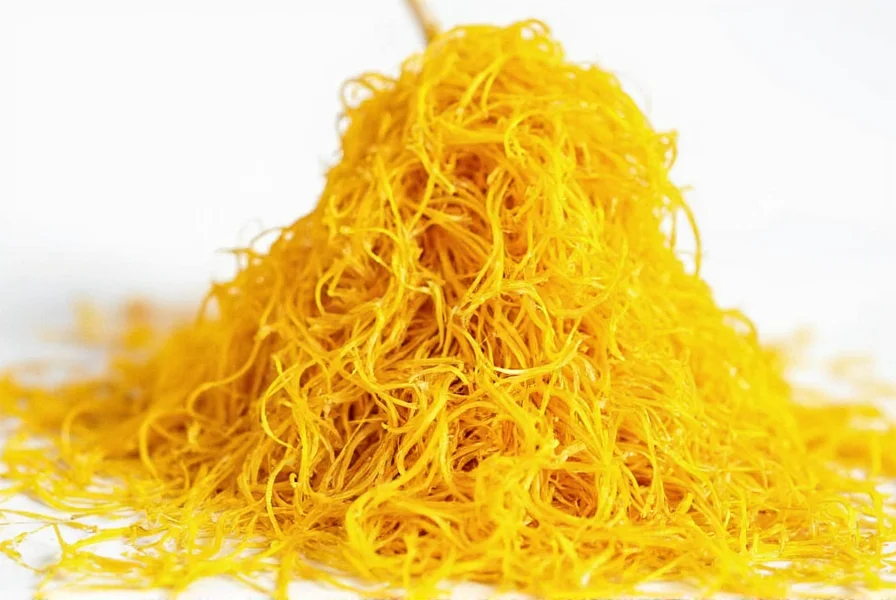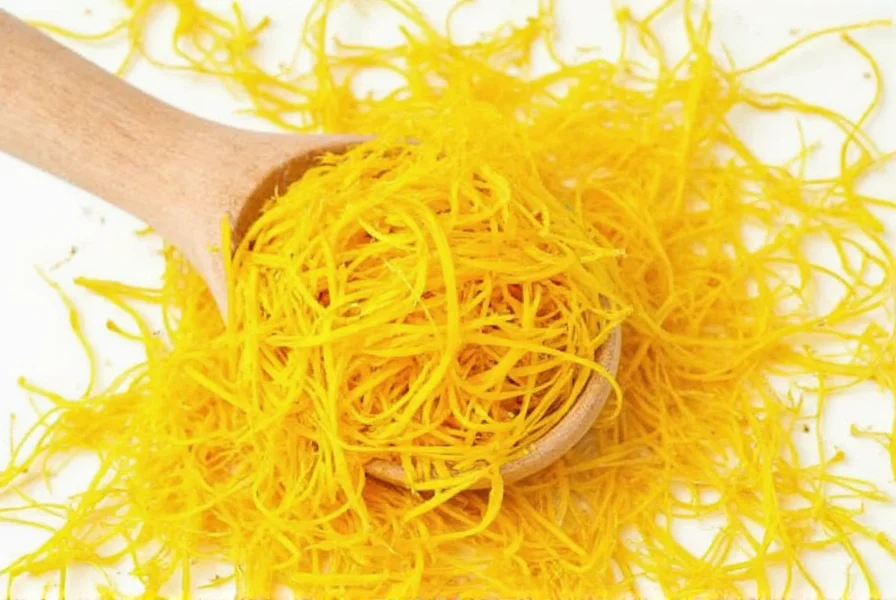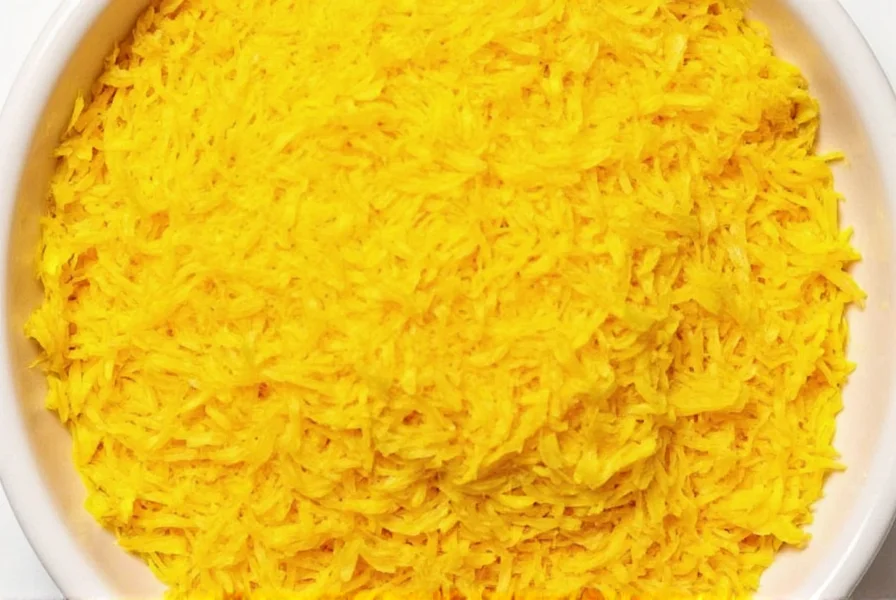Understanding the truth about saffron's color is essential for both culinary enthusiasts and health-conscious consumers. Saffron, harvested from the delicate stigmas of the Crocus sativus flower, ranks as the world's most expensive spice by weight due to its labor-intensive harvesting process. Each flower produces just three red stigmas, requiring approximately 75,000 blossoms to yield a single pound of dried saffron. This meticulous hand-picking process explains saffron's premium price point, typically ranging from $500 to $5,000 per pound depending on quality.
The Science Behind Saffron's Color Transformation
While saffron threads appear deep red when dry, they release a vibrant yellow-orange pigment when introduced to liquids. This transformation occurs due to crocin, saffron's primary coloring compound, which dissolves in water or oil. The resulting golden hue has earned saffron the nickname “sun spice,” but the threads themselves maintain their characteristic crimson color. This scientific phenomenon explains why many mistakenly believe saffron should be yellow.

Common Saffron Substitutes Marketed as “Yellow Saffron”
The term “yellow saffron” most frequently appears in markets selling inferior substitutes. Fraudulent vendors often use this misleading label to pass off cheaper alternatives as genuine saffron. The most prevalent imposters include:
| Substitute | Color Characteristics | Price Comparison | Key Differences from Real Saffron |
|---|---|---|---|
| Turmeric | Bright yellow powder | $10-20 per pound | Earthy flavor, no floral notes, contains curcumin instead of crocin |
| Safflower | Yellow-red threads | $30-50 per pound | Milder flavor, less intense coloring power, different chemical composition |
| Marigold petals | Orange-yellow threads | $20-40 per pound | Bland taste, minimal aroma, significantly lower crocin content |
How to Identify Authentic Saffron
Distinguishing genuine saffron from imposters requires attention to multiple sensory characteristics. Real saffron exhibits specific traits across several dimensions:
Visual Inspection
Authentic saffron consists of deep red, trumpet-shaped threads with a slight orange hue at the base. High-quality saffron shows no yellow coloring in the threads themselves. When purchasing, look for uniform crimson coloration and avoid any product containing significant yellow or orange threads, which indicates lower grade or adulteration.
The Water Test
Place a few threads in warm water to observe their behavior. Genuine saffron will gradually release a golden-yellow color while maintaining its red structure for at least 15-20 minutes. Fake saffron made from dyed fibers or turmeric will immediately discolor the water or lose thread integrity. Authentic saffron threads should remain intact and red even after prolonged soaking.
Sensory Evaluation
Real saffron delivers a distinctive honey-like aroma with subtle hay notes and a pleasantly bitter taste. Counterfeit products often smell predominantly of turmeric (earthy) or contain no discernible aroma. When tasting, authentic saffron produces a complex flavor profile that evolves from bitter to floral, while substitutes typically offer one-dimensional taste experiences.

Economic Impact of Saffron Fraud
Saffron adulteration represents a significant global issue, with industry experts estimating that 30-50% of saffron sold worldwide contains some level of substitution. This fraud impacts multiple stakeholders:
- Consumers pay premium prices for inferior products lacking saffron's nutritional benefits
- Legitimate producers face market devaluation and reputational damage
- Health-conscious buyers miss out on saffron's documented antioxidant properties
The most affected regions include major saffron-producing countries like Iran, Spain, and India, where counterfeit operations undermine legitimate agricultural economies. Recent studies using DNA barcoding have revealed sophisticated adulteration techniques, including the addition of synthetic dyes and plant materials designed to mimic saffron's chemical profile.
Practical Buying Guide for Authentic Saffron
When purchasing saffron, follow these evidence-based recommendations to ensure authenticity:
- Check the packaging for ISO 3632 certification, which verifies saffron quality through standardized color, flavor, and aroma measurements
- Examine thread structure - authentic saffron shows trumpet-shaped ends and consistent red coloration without yellow sections
- Verify origin labeling - reputable sellers specify country of origin (Iran produces approximately 90% of world's saffron)
- Assess pricing realistically - if the price seems too good to be true (under $10 per gram), it almost certainly contains substitutes
- Request lab testing results from specialty retailers, particularly for bulk purchases
For culinary applications, remember that a little authentic saffron goes a long way. Most recipes require just 10-20 threads to achieve the desired flavor and color impact. Proper storage in an airtight container away from light preserves saffron's potency for up to two years.
Frequently Asked Questions
Why does saffron turn food yellow if the threads are red?
Saffron contains crocin, a carotenoid pigment that dissolves in liquid to produce a golden-yellow color. The red threads release this pigment gradually while maintaining their structural integrity. This unique property allows saffron to color dishes without losing its physical form, unlike turmeric which completely dissolves.
How can I test saffron authenticity at home?
Perform the water test: place 3-4 threads in 2 tablespoons of warm water. Authentic saffron will gradually release golden color over 15-20 minutes while maintaining red thread structure. Fake saffron will immediately discolor the water or dissolve completely. Real saffron should also produce a distinctive floral aroma and complex bitter-to-floral taste profile.
Is there such a thing as yellow saffron variety?
No, there are no naturally occurring yellow saffron varieties. All genuine saffron comes from Crocus sativus, which produces exclusively red stigmas. Products marketed as “yellow saffron” are either mislabeled turmeric, safflower, or artificially colored substitutes. The confusion often stems from saffron's ability to impart yellow color to foods while remaining physically red.
What makes saffron so expensive compared to other spices?
Saffron's high cost stems from its labor-intensive harvesting process. Each Crocus sativus flower produces only three stigmas, which must be hand-picked at dawn when the flowers are still closed. It takes approximately 75,000 flowers to yield one pound of dried saffron. The entire harvesting window lasts just 1-2 weeks annually, requiring massive manual labor during this short period.











 浙公网安备
33010002000092号
浙公网安备
33010002000092号 浙B2-20120091-4
浙B2-20120091-4